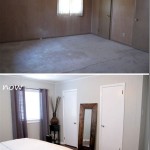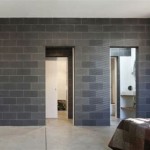How Much Do Interior Designers Make In Florida?
The field of interior design in Florida offers a vibrant and diverse landscape for professionals. From luxury beachfront properties to bustling urban environments, the demand for skilled interior designers remains consistently high. However, understanding the compensation landscape is crucial for both aspiring and established designers. This article will delve into the factors influencing interior designer salaries in Florida, providing a comprehensive overview of the earnings potential within this creative profession.
The salary of an interior designer in Florida is not a fixed figure. It is a dynamic value influenced by a multitude of factors. These include experience level, education, specialization, geographic location within the state, and the type of employer. Additionally, economic conditions and market trends play a significant role in shaping the overall compensation structure for interior designers.
Experience Level and Its Impact
Experience is arguably one of the most significant determinants of salary for interior designers in Florida. Entry-level positions, often held by recent graduates or individuals with limited professional experience, naturally command lower salaries. These roles typically involve assisting senior designers, drafting plans, selecting materials, and managing administrative tasks. The median salary for entry-level interior designers in Florida can range from approximately $35,000 to $45,000 annually. This figure can fluctuate based on the specific firm or company and the complexity of the projects undertaken.
As interior designers accumulate experience, their earning potential increases substantially. Mid-career professionals, with 5 to 10 years of experience, can expect to earn significantly more. Their expertise in project management, client communication, and design execution allows them to handle more complex and demanding projects. The median salary for mid-career interior designers in Florida typically falls within the range of $55,000 to $75,000 per year.
Senior interior designers, with over 10 years of experience and a proven track record of successful projects, represent the highest earners in the field. These professionals often hold leadership positions within design firms or operate their own independent practices. Their expertise encompasses not only design principles but also business management, marketing, and client acquisition. Senior interior designers in Florida can command salaries exceeding $80,000, with some reaching or surpassing $100,000 annually. The upper end of this range is often achieved by those working on high-end residential or commercial projects, or those with specialized expertise.
Furthermore, experience is not merely about the number of years worked. The quality and relevance of that experience are equally important. Designers with a diverse portfolio showcasing a wide range of projects and design styles are generally more sought after and command higher salaries. Similarly, experience working with specific types of clients, such as luxury hotels or corporate offices, can enhance earning potential.
Education, Certifications, and Specializations
A formal education in interior design is almost universally required for entry into the profession and significantly impacts earning potential. A bachelor's degree in interior design from an accredited program provides a comprehensive understanding of design principles, space planning, materials, building codes, and computer-aided design (CAD) software. While an associate's degree may provide a foundation, a bachelor's degree is generally preferred by employers and often leads to higher starting salaries.
Beyond a degree, professional certifications can further enhance an interior designer's credibility and earning potential. The National Council for Interior Design Qualification (NCIDQ) certification is widely recognized and respected within the industry. Passing the NCIDQ exam demonstrates a designer's competency in all aspects of interior design and is often required for licensure in many states, including some jurisdictions in Florida. Obtaining this certification can lead to increased job opportunities and higher salaries.
Specialization within interior design is another factor that can influence earnings. Some designers choose to focus on specific areas of expertise, such as residential design, commercial design, hospitality design, healthcare design, or sustainable design. Demand for specialists can vary depending on market trends and geographic location. For instance, in coastal areas of Florida, there may be a higher demand for designers specializing in hurricane-resistant or coastal-themed design. Specializing in a high-demand area can significantly boost earning potential.
Furthermore, proficiency in specific software programs, such as AutoCAD, Revit, SketchUp, and other 3D modeling and rendering tools, is highly valued by employers. Designers with advanced skills in these programs are often more efficient and productive, making them more valuable to their firms and justifying higher compensation.
Geographic Location and Employer Type
The geographic location within Florida plays a significant role in determining interior designer salaries. Metropolitan areas, such as Miami, Fort Lauderdale, Tampa, Orlando, and Jacksonville, typically offer higher salaries compared to smaller towns or rural areas. This is due to the higher cost of living in these cities, as well as the greater concentration of design firms, architectural practices, and high-end residential and commercial projects. Competition for talent is also more intense in these urban centers, driving up salaries.
Coastal regions of Florida, particularly those with a large concentration of luxury homes and resorts, often present lucrative opportunities for interior designers. The demand for high-end residential and hospitality design services is consistently strong in these areas, leading to higher salaries and project fees. Conversely, inland areas with lower population densities and smaller economies may offer fewer opportunities and lower overall compensation.
The type of employer also significantly affects salary. Interior designers can work for a variety of organizations, including large design firms, architectural practices, construction companies, retail stores, or government agencies. Large design firms typically offer higher salaries and benefits packages compared to smaller firms or independent practices. Architectural practices may also provide competitive salaries, particularly for designers with expertise in space planning and building codes.
Many interior designers choose to establish their own independent practices. While this offers greater autonomy and control over projects, it also comes with the responsibility of managing all aspects of the business, including marketing, client acquisition, and financial management. The earning potential for self-employed interior designers can be highly variable, depending on their business acumen, reputation, and ability to attract and retain clients. Some independent designers earn significantly more than they would working for a firm, while others may earn less, particularly in the early stages of their business.
In addition to salary, benefits packages can also contribute significantly to an interior designer's overall compensation. Common benefits include health insurance, dental insurance, vision insurance, paid time off, retirement plans, and professional development opportunities. The value of these benefits can vary widely between employers, so it is important to consider them when evaluating job offers.
Economic conditions and market trends also play a crucial role in shaping the compensation structure for interior designers. During periods of economic growth, the demand for design services typically increases, leading to higher salaries and more job opportunities. Conversely, during economic downturns, the demand for design services may decline, resulting in lower salaries and increased competition for jobs. Staying informed about economic trends and market conditions is essential for interior designers to navigate the job market and maximize their earning potential.
Networking and professional development are also critical for career advancement and salary growth. Attending industry events, joining professional organizations, and pursuing continuing education courses can help interior designers stay up-to-date on the latest trends, technologies, and best practices. Building a strong professional network can also lead to new job opportunities and collaborative projects.
In conclusion, the salary of an interior designer in Florida is a complex equation influenced by a range of factors. While experience, education, specialization, geographic location, and employer type are primary determinants, economic conditions and individual business acumen also play significant roles. Understanding these variables empowers designers to make informed career decisions and negotiate effectively for fair compensation.

Interior Designers

Interior Designers

Interior Designers

Interior Designers

How Much Does An Interior Designer Cost In 2024 Decorilla
Interior Designer Salaries What Can You Earn With The Ncidq Certificate

Here S How Much Money Interior Designers Make In Every State

How Much Does An Interior Designer Cost In 2024 Decorilla

Certified Residential Interior Designer

How Much Does An Interior Designer Cost In 2024 Decorilla
Related Posts








